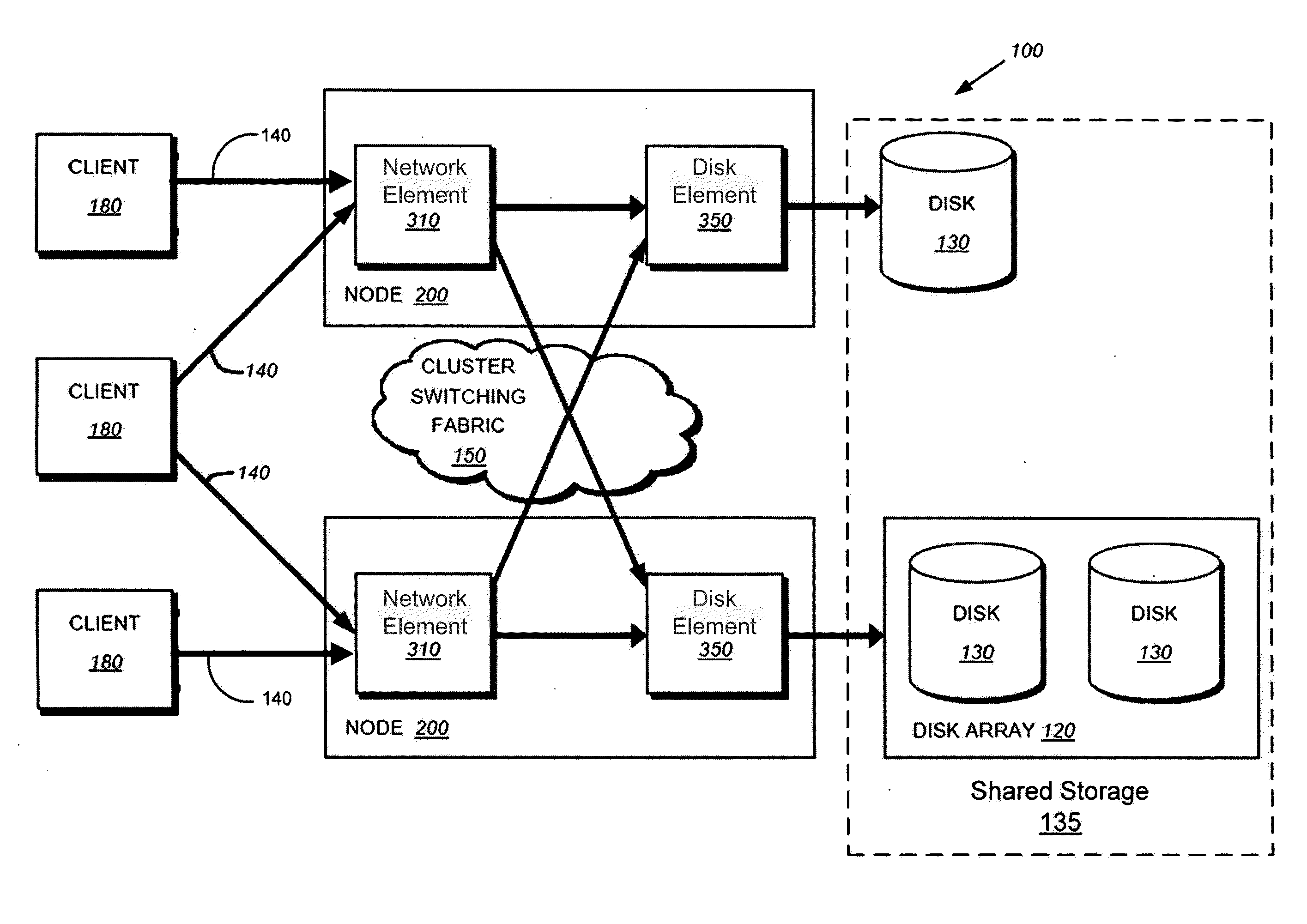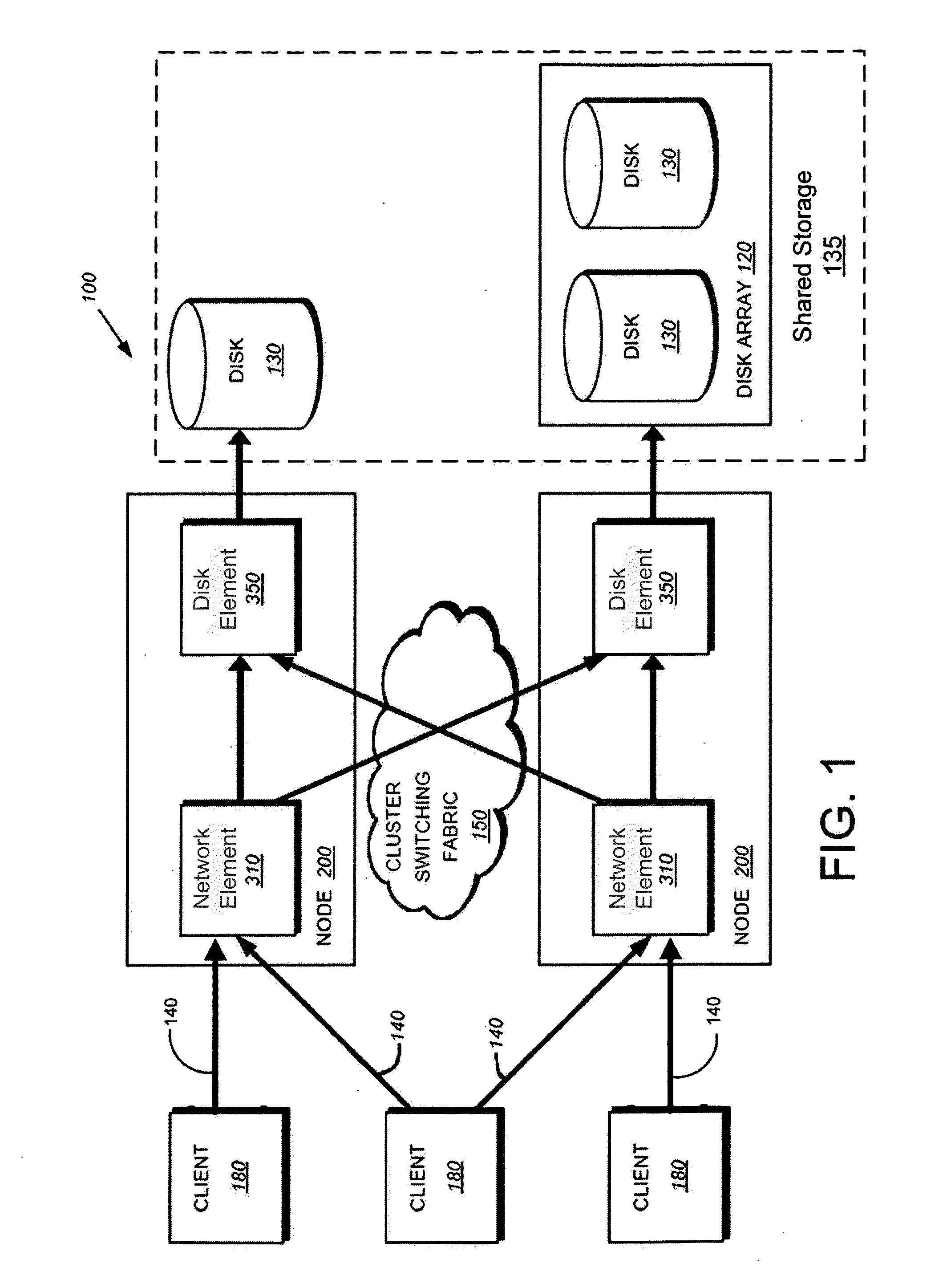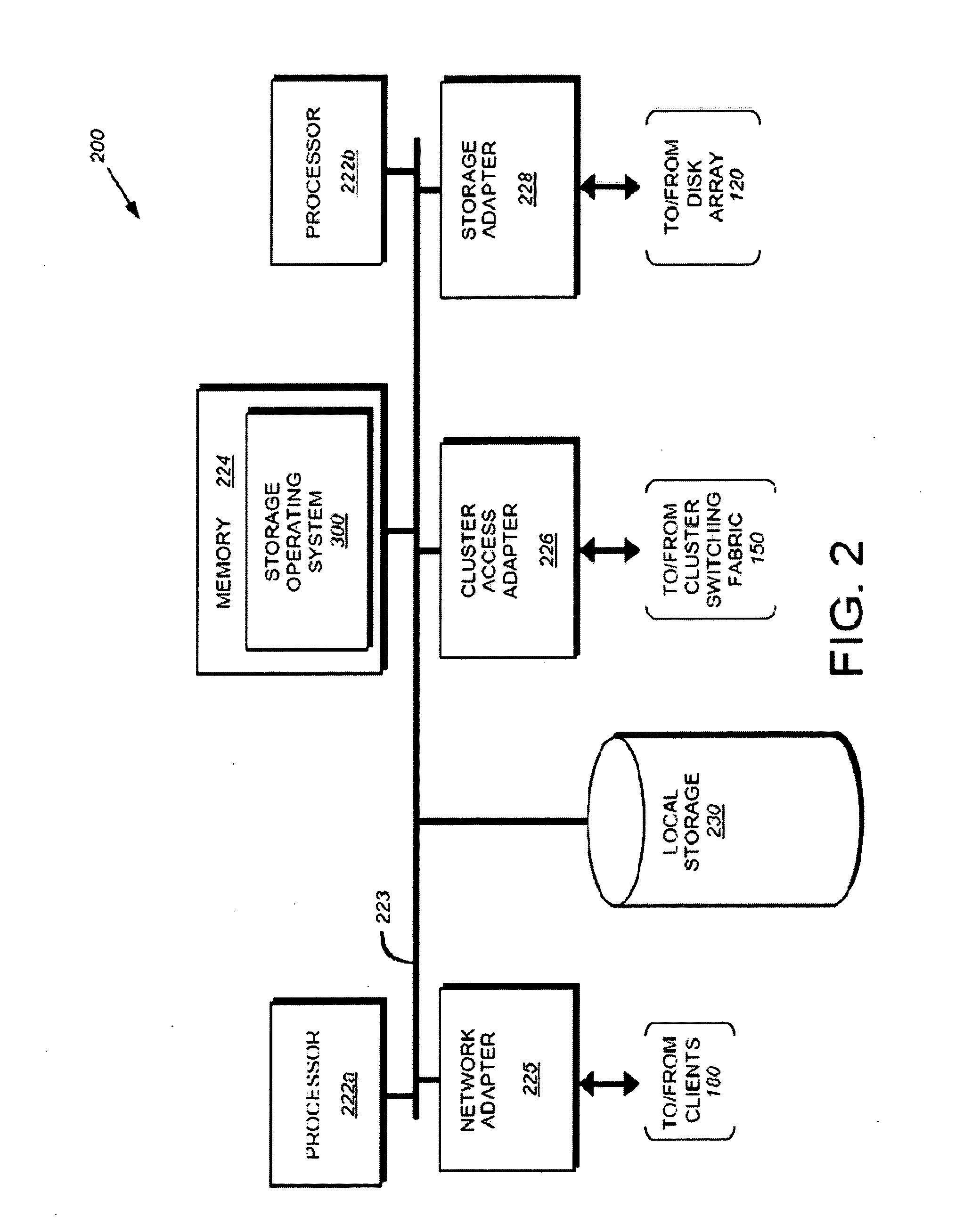Servicing of Network Software Components of Nodes of a Cluster Storage System
a cluster storage system and network software technology, applied in the field of storage systems, can solve the problems of affecting the processing of access requests, and affecting the service life of clients, so as to reduce the disruption of client data access
- Summary
- Abstract
- Description
- Claims
- Application Information
AI Technical Summary
Benefits of technology
Problems solved by technology
Method used
Image
Examples
Embodiment Construction
[0032]In the following description, numerous details are set forth for purpose of explanation. However, one of ordinary skill in the art will realize that the embodiments described herein may be practiced without the use of these specific details. In other instances, well-known structures and devices are shown in block diagram form in order not to obscure the description with unnecessary detail.
[0033]The description that follows is divided into seven sections. Section I describes a cluster environment in which some embodiments operate. Section II describes a storage operating system having a servicing module for servicing software components of nodes of the cluster. Section III describes a shared storage of the cluster. Section IV describes a client data-access session between a client and a node. Section V describes servicing of software components of nodes of the cluster. Section VI describes servicing of network software components (network elements) of nodes of the cluster. Sect...
PUM
 Login to View More
Login to View More Abstract
Description
Claims
Application Information
 Login to View More
Login to View More - R&D
- Intellectual Property
- Life Sciences
- Materials
- Tech Scout
- Unparalleled Data Quality
- Higher Quality Content
- 60% Fewer Hallucinations
Browse by: Latest US Patents, China's latest patents, Technical Efficacy Thesaurus, Application Domain, Technology Topic, Popular Technical Reports.
© 2025 PatSnap. All rights reserved.Legal|Privacy policy|Modern Slavery Act Transparency Statement|Sitemap|About US| Contact US: help@patsnap.com



